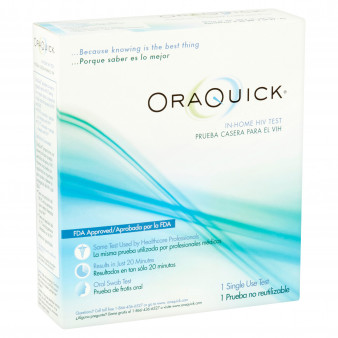Men who have sex with men (MSM) may face higher rates of HIV if they switch from taking HIV tests in clinics to using home-based tests, aidsmap reports. This phenomenon would be a consequence of the self-tests’ longer window period, during which cases of acute, or recent, infection can produce false negative results. The tests may also reduce the rates of linkage into HIV care that a clinic would likely be more able to handle in the event of an HIV-positive diagnosis.
Publishing their findings in Sexually Transmitted Diseases, investigators designed a mathematical modeling study to project how a switch to self-testing might affect gay men in Seattle.
Today’s clinic-based HIV tests have reduced the tricky window period to just 15 days after exposure to the virus, and they boast 100 percent accuracy in detecting the virus after that time. The OraQuick In-Home HIV Test, approved in 2012 and sold over the counter and online, has a three-month window period, with the capacity to detect just 91.7 percent of HIV infections afterward.
If the men were to continue undergoing testing under current patterns, the study’s model estimated an HIV prevalence rate of 18.6 percent—close to the actual prevalence of about 15 percent among MSM Seattleites. In the event that all of the MSM switched from clinic- to home-based self-testing, and in the event that if home-based testing had no impact on the frequency of testing, the demographic’s HIV prevalence would rise to 27.5 percent. That figure would be 22.4 percent if the men all switched to self-tests and those tests ultimately tripled the frequency of HIV testing among the group.
To read the aidsmap story, click here.
To read the study abstract, click here.








2 Comments
2 Comments